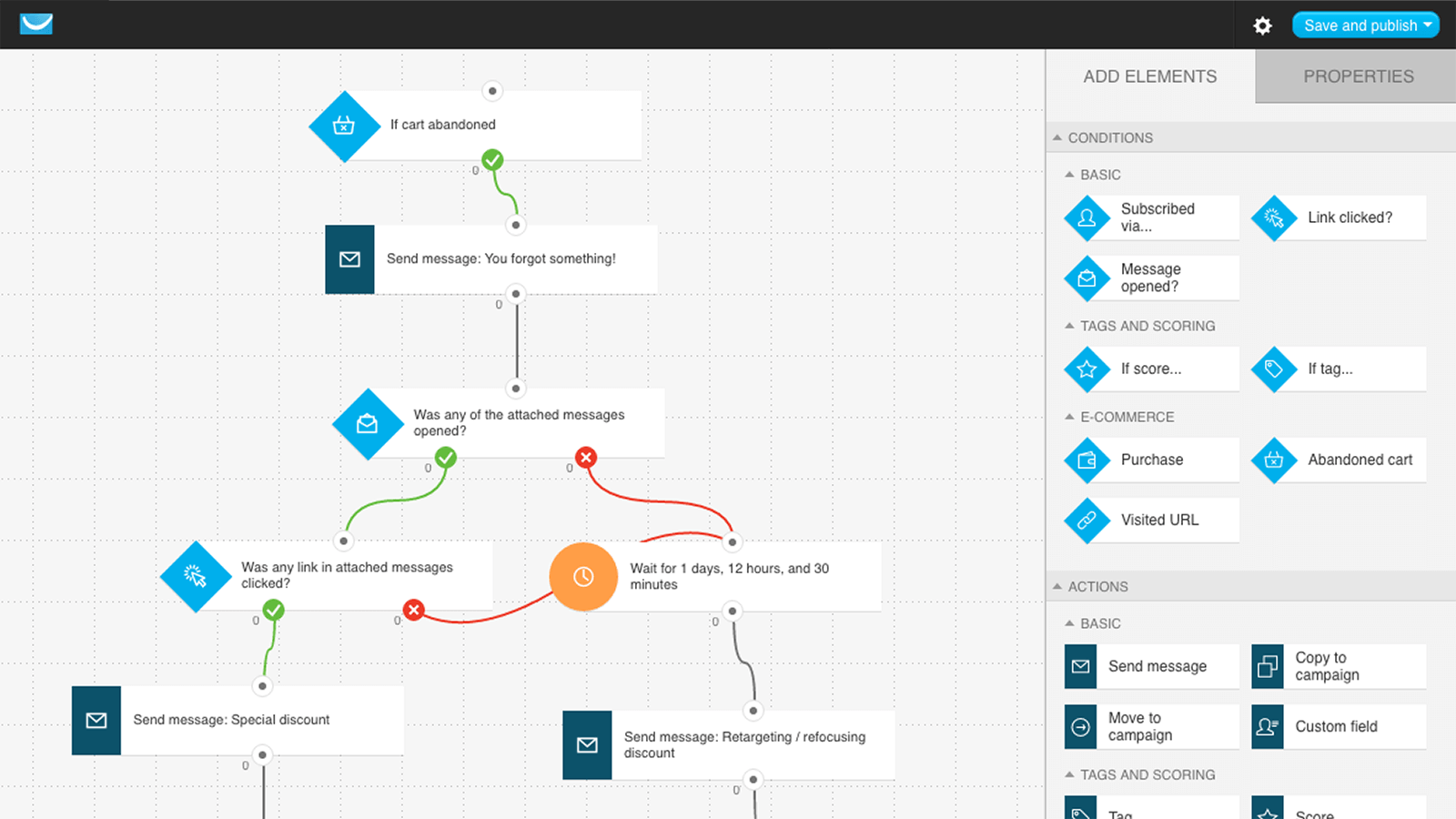Marketing automation platforms produce high returns for those that use them. We know. We’ve done the research.
But most marketing automation solutions are out of reach of the small to medium-sized business (SMB). There are a few exceptions to that rule, including behemoths like MailChimp and full-featured, yet alternately priced solution like Greenrope, but the SMB-focused marketing automation landscape is still fairly sparse.
Today, GetResponse — the email marketing platform that has attracted 350,000 customers — has announced its marketing automation platform, and it is squarely focused on the SMB marketplace.
“SMB marketing automation has seen low market penetration for two simple reasons,” Daniel Brzezinski, CMO and VP of Marketing and Product Development at GetResponse, told me. “The first is price. SMB marketing budgets are comparatively small. Most automation tools, on the other hand, are expensive, forcing long-term contract commitments. The second challenge has been sheer ease-of-use. Unlike enterprise businesses, most SMBs don’t have extensive IT expertise in-house.”
GetResponse’s marketing automation platform features a drag-and-drop interface similar to those seen in solutions such as Autopilot and ActiveCampaign. Marketers simply click, drag, and drop decisions and actions to a canvas, with connected tasks that depend on whether the recipient performs an action or not.
For example, you can send an email to a segment of your customer list and then follow up with different messages or actions based on whether they read, click, or ignore your email.
GetResponse goes further than email, however. Integrating with ecommerce systems, it offers automation of various events, such as abandoned carts, purchases, and repeated visits to product pages. Users can also employ filters to improve targeting — you may want to only send a message to the first ten subscribers who open the original message, for example, or target those who purchase a particular product on offer.
And, like many more-expensive marketing automation platforms, GetResponse allows you to tag and score website visitors in order to segment them based on interest and intent.
I’ve seen the workflow builder in action, and it is one of the more impressive click-and-drag interfaces on offer, yet it is extremely easy to use. Outside of how a solution is priced, ease of use is an important factor when targeting smaller businesses, who may not have a dedicated marketing function.
But even easy-to-use workflow solutions can become complex when it comes time to insert steps between sections, or when other workflows start to conflict. How does GetResponse deal with conflicts, or mitigate them?
“Users start off creating smaller, simple and clear workflows,” Brzezinski said. “Each of them is a separate, small building block that can be edited, turned off or expanded at any given time. Linking the workflows creates an advanced ecosystem, which is still easy to manage. What is more important, this solution makes it easy to trace back the paths that don’t bring desired results and gives an opportunity to improve them. This kind of solution design gives users more flexibility, clarity, and an opportunity to react fast to changes that naturally happen within the progress of marketing campaigns.”
The solution has already shown itself to be useful at scale. During its three-month beta period, it delivered 6 million messages across around 13,000 marketing automation workflows.
So what’s next for GetResponse marketing automation, and what does Brzezinski think will happen in the future for platforms like GetResponse?
“Over the next several months, we plan on bringing even greater simplicity to that experience, adding even more visual elements and drag-and-drop functionality with a newly redesigned customer panel,” Brzezinski said.
In making software that’s fundamentally easy-to-use — without sacrificing power — we help SMB marketers optimize resources and make their outreach more effective. Our strategy, I think, is reflective of the future of the marketing automation industry, as a whole. Most automation software was designed and built for larger organizations, then presented to the SMBs as easy-to-use tools that will fit their needs. As a result, SMBs can be discouraged to use them and dig deeper into marketing automation in general.
GetResponse marketing automation is out of beta today and is available from $15 per month for smaller businesses that require only one user to have access, with a customer contact list of 1,000 or less. Plans scale upward from there, and the company also offers enterprise plans. More details are available from the GetResponse website.
VentureBeat's mission is to be a digital town square for technical decision-makers to gain knowledge about transformative enterprise technology and transact. Learn More


